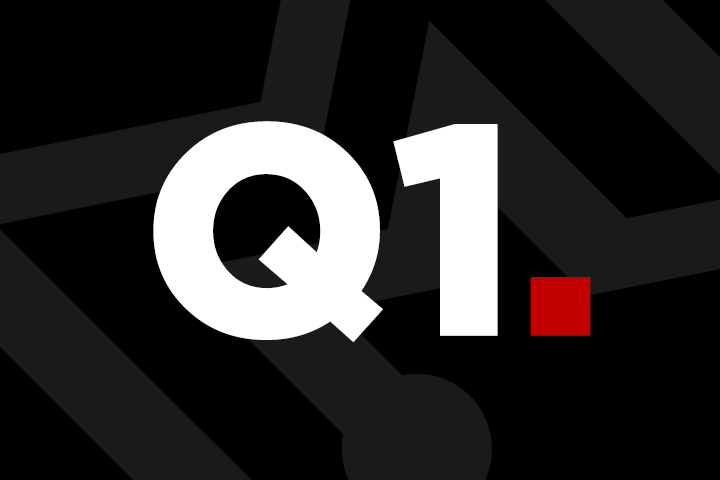Take the Pain Out of ETRM/CTRM Implementations – How to Make Your Team Comfortable From Day One

Key Takeaways
● The key to quicker and easier ETRM/CTRM implementations is not more training, it’s better training
● Listen to employee concerns to eliminate implementation resistance
● Start training early to ensure a smooth ETRM/CTRM implementation
● The right training delivers faster ROI
Modern ETRM/CTRM systems are ideal for navigating today's ever-changing energy markets — and demand is growing for modernization across companies of all sizes. With so many benefits, the right ETRM/CTRM software can drastically improve the way companies and employees manage trade operations. However, while all the stakeholders understand the value of adopting a new trading system, they often hesitate to change the status quo.
Table of Contents
- Why Isn't Everyone Adopting a Modern ETRM/CTRM?
- Resistance Can Mean Project Failure
- How to Avoid an ETRM/CTRM Implementation Catastrophe
Why Isn’t Everyone Adopting a Modern ETRM/CTRM?
As with any enterprise software investment, there are many reasons why companies resist purchasing a new ETRM/CTRM system, including budgetary concerns, executive buy-in, embedded legacy systems, and increased operational risk.
Executive Buy-In Is Hard
The company’s leadership team needs to be convinced that investing in a new ETRM/CTRM system will improve its bottom line — whether that’s a direct impact on P&L and/or major efficiencies gained. However, if executives can’t see the immediate benefits of adopting a modern system, they will choose to invest in other IT programs to get the benefits they want.
An ETRM/CTRM system costs between $150,000–$250,000 per year for most types of trading companies, plus taxes and professional services fees. Also, contract terms are usually one to five years, so it’s a big financial commitment.
However, budgetary concerns may be overcome if the ROI an ETRM/CTRM system can deliver is properly explained. A modern ETRM/CTRM system will increase efficiency, enable faster reporting and decision-making, and mitigate risk more effectively. These are tangible, quantifiable benefits that are easy for management to understand, and therefore easy to explain.
Embedded Systems Drive Resistance
Many energy companies rely on spreadsheets, older legacy software, and homegrown systems that have been in place for decades. Everyone is comfortable with these systems — they know how to use them, their quirks, and how to work around their limitations. It may be clunky, but it still seems easier than learning a whole new system.
Plus, let’s face it: abandoning the old way of doing things to learn a brand-new system can be downright uncomfortable.. However, with the right training, every stakeholder can learn to value the benefits of a modern system — and breathe a sigh of relief when they get the information they need in a faster, more reliable way.
FOBO (Fear of Becoming Obsolete) Is Real
Oftentimes, the people who will actually use the new ETRM system may not understand what’s behind the change. Consequently, they are left without a clear picture of the new process, its advantages, or how it impacts their jobs.
Fear of Becoming Obsolete (FOBO) is a common concern in jobs where technology can replace manual work. Moving from a time-consuming process like managing P&L in spreadsheets — which requires manually inputting trade and market data — to using a modern ETRM system would increase efficiency. The unfortunate reality is that efficiency often leads to reduced headcount — but the right efficiencies, in the right way, can improve can improve employees' experience at work by removing mundane tasks and allowing them time to focus on next level contributions.
Modern ETRM/CTRM systems are designed to make jobs easier, not eliminate them. Employees still need to be in the driver’s seat and feel empowered by the system they’re using rather than restricted by it. Since modern ETRMs enhance risk management through improved tracking, analysis, and reporting, it’s about making improvements rather than creating redundancy.
With clear communication and personalized training, employees can become comfortable with the benefits of the new system as well as its functions and features, so that FOBO can be reduced or (even better) eliminated.
Operational Risk
While a company is in the process of implementing new software and procedures, it also has to continue its daily operations without any major interruption. Managing an ETRM/CTRM implementation requires work from internal staff, but it cannot take them away from their jobs, disrupt trading and controls, or increase risk for the organization.
If the implementation team works closely with ETRM/CTRM users to ensure they do not disrupt their current jobs during the process, together they can reduce operational risk.
Resistance Can Mean Project Failure
The decision to implement an ETRM platform is huge, so the entire trading and risk organization has to be on board. The project can fail if the implementation is not managed correctly, which can cause company-wide problems:
- Failure is expensive. If a company invests $150,000+ on a new system no one is using, it wastes resources that could have been used for other initiatives and revenue opportunities. This is simply bad business practice and can result in problems for the company and the project leader who championed the project.
- A failed implementation consumes time and resources without providing any benefits to the company. Employees will have spent weeks (or worse, months) distracted or otherwise hampered by the implementation — including time helping with integrations, answering questions, and developing workflows that will not be used.
- If the software is purchased and never used, employees can lose faith in the management team. Their belief that the new system was a bad idea will be confirmed, and they will resist any future changes even more strongly. As a result, the company may be stuck with its old system forever.
- Partial adoption is inefficient and potentially harmful. Workflows will be broken if half the team is doing one thing and the other half is using a completely different process. If the team can’t get on the same page, the entire project may be scrapped, resulting in reverting back to old systems.
- A failed implementation means the company does not gain all the benefits of the new system, leaving it at risk of falling behind its competitors and not being able to keep up with the changing market.
How to Avoid an ETRM/CTRM Implementation Catastrophe
Historically, ETRM training involved waiting until the software was installed, collecting people in a room (or on a conference call — remember those?), and going through the system with PowerPoint presentations and software demonstrations. These training sessions could take several days.
Unfortunately, this type of training is not very effective. People can only sit and listen for short periods of time before losing interest, at which point they stop paying attention. (There’s a reason why TED Talks have an 18-minute rule.)
The good news is that there is a better way to train your staff for a successful ETRM/CTRM implementation and higher adoption. Here’s what to do instead.
Engage Employees From the Start
When you welcome employees into the system on Day One, you give them the opportunity to learn to use it over time. This way, they’ll get information specific to their actual jobs instead of a generic system overview. For example, traders will learn how to enter trades — something they do every day — without listening to presentations on features they may never use.
If training starts early, it can evolve through the implementation. Initial sessions may be very simple training on how to navigate the system. With this foundation, subsequent sessions can focus on advanced features and multi-step processes without losing anyone.
Encourage Feedback Early and Often
If you engage with the system users from the first day, you can get feedback early in the process, enabling quicker resolution if there are issues to address. Your end users will understand the minute details of their jobs better than managers, and be able to identify and flag things that don’t work as they expect, allowing conversations about process change or tweaks to configuration and preparing them for the eventual change over.
By listening to their feedback and talking through any concerns, users will feel more comfortable with how the system works before they begin using it — and avoid big surprises once it’s live.
Deliver the Right Information With Customized Training
Introduce users to the software early on and let them drive the training based on what they need to learn. Training sessions should be hands-on, specific, and short. These targeted sessions can be delivered as soon as a feature is ready with data and configuration, often easily tacked on to existing working sessions.
By the time the implementation is complete, your team will understand how to use the system and be ready to take advantage of all the benefits it offers. The company will benefit from the modern ETRM/CTRM system’s single system of record and real-time reporting, reducing operational risk and increasing efficiency.



